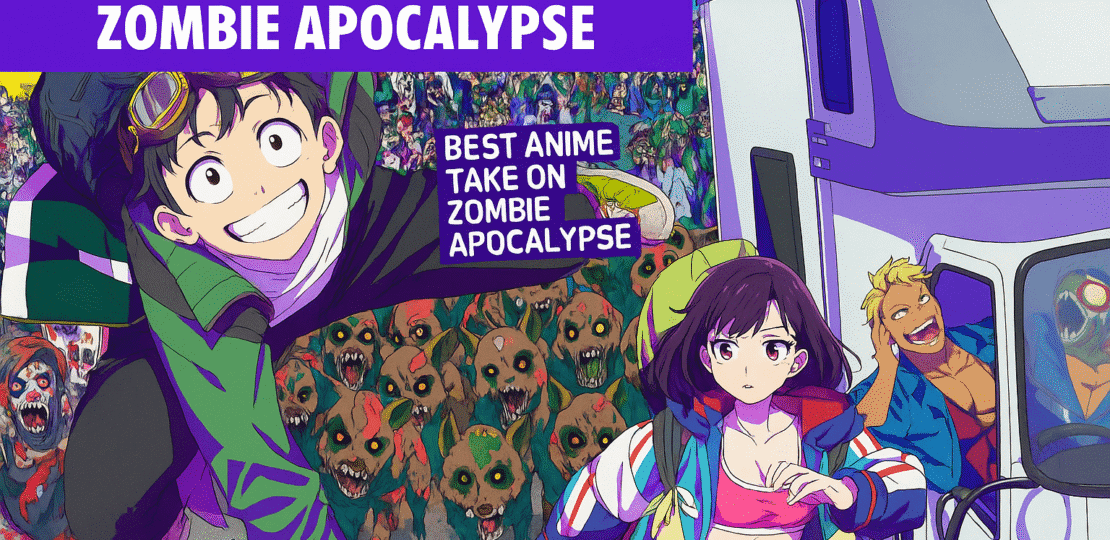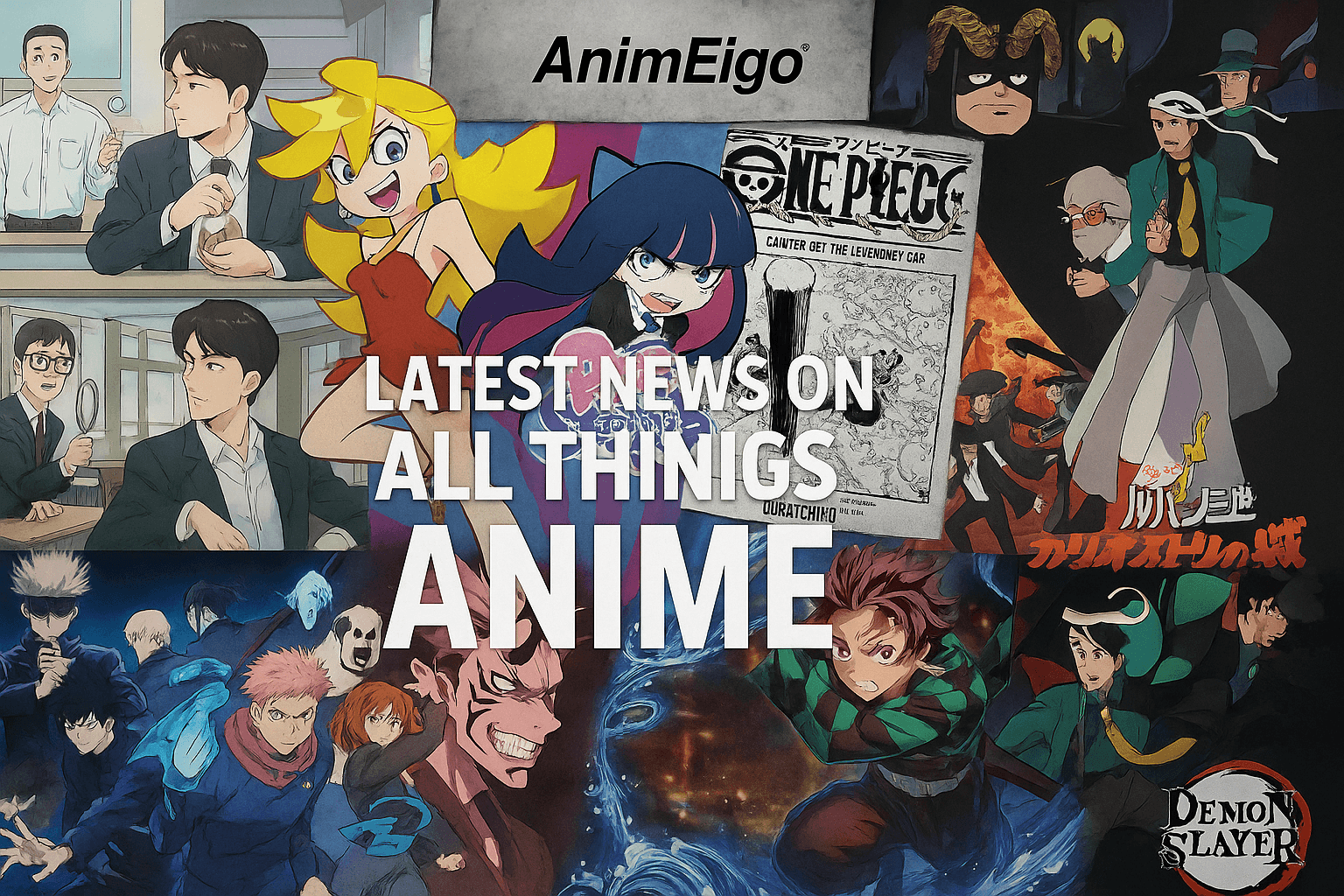Zom 100: Bucket List of the Dead – One of the Best Underrated Anime of All Time
August 17, 2025 | by Haku

Introduction and Overview (Zom 100: Bucket List of the Dead)
In the crowded world of anime, where high-stakes shonen and isekai dominate, Zom 100: Bucket List of the Dead (Watch on Crunchyroll) stands out as a fresh take on the zombie apocalypse genre. Released in 2023, this 12-episode series adapts Haro Aso and Kotaro Takata’s manga, blending comedy, action, and social commentary. Despite its innovative premise and critical nods, it remains under the radar for many fans.
The story follows Akira Tendo, a burned-out salaryman who finds liberation in a zombie outbreak. Instead of despair, he crafts a bucket list of 100 dreams to fulfill before turning undead. This optimistic twist subverts typical zombie tropes, focusing on joy amid chaos.
Produced by Bug Films, the anime aired from July to December 2023, facing production delays that impacted its momentum. Streamed on platforms like Crunchyroll and Netflix, it earned praise for visuals but struggled with hype compared to contemporaries like Jujutsu Kaisen.
Why underrated? Delays led to inconsistent releases, diluting buzz. Mixed reviews on later episodes overshadowed its strengths, like vibrant animation and heartfelt messages. Yet, it holds a 100% Rotten Tomatoes score, hinting at untapped potential.
The manga, serialized since 2018, has 20 volumes and inspired a live-action Netflix film. Its blend of humor and critique resonates, but limited marketing kept it niche.
Fans on social media call it a “hidden gem,” praising its relatability for overworked viewers. X users highlight its motivational vibe, urging more to discover it.
Compared to zombie classics like High School of the Dead, Zom 100 prioritizes slice-of-life over gore, making it accessible yet overlooked.
Its opening episode is hailed as one of anime’s best, setting a high bar that the series maintains through charm.
Ultimately, Zom 100’s underrated status stems from timing and genre saturation, but its core message of living fully endures.
Plot and Characters
The plot kicks off with Akira Tendo, a 24-year-old trapped in a soul-crushing job at a black company. Overworked and depressed, he envies zombies in movies—until a real outbreak frees him.
Akira’s first act: scream joyfully at skipping work. He drafts his bucket list, from confessing crushes to traveling Japan, turning apocalypse into adventure.
Early episodes show Akira navigating Tokyo’s undead streets, scavenging and checking items like riding a motorcycle or partying.
He reunites with Kencho, his college buddy, adding comic relief. Together, they recruit Shizuka, a pragmatic survivor, and Beatrix, a katana-wielding tourist.
Mid-series, the group road-trips across Japan, facing quirky threats like zombie sharks and haunted spots, blending action with bucket-list fulfillment.
Later arcs introduce stakes: escorting immune Izuna to a vaccine lab, clashing with antagonists like abusive boss Kosugi and nihilist Higurashi.
The finale ties personal growth with survival, as Akira confronts his past and embraces teamwork.
Akira is optimistic and athletic, voiced by Shuichiro Umeda (Japanese) and Zeno Robinson (English). His “Akirager” superhero persona adds flair.
Kencho, voiced by Makoto Furukawa/Bill Millsap, brings humor through comedy aspirations and nudity gags, balancing the group’s seriousness.
Shizuka, by Tomori Kusunoki/Abby Trott, evolves from cautious analyst to empathetic doctor-dreamer, hinting romance with Akira.
Beatrix, voiced by Minami Takahashi/Laura Post, embodies cultural fusion with her samurai skills and Japan love.
Supporting cast like Takeru and Izuna add depth, while villains mirror societal flaws.
The ensemble’s chemistry drives the narrative, making episodic adventures feel cohesive.
Themes and Unique Elements
Zom 100 critiques Japan’s grueling work culture, portraying Akira’s job as zombifying—worse than actual undead.
The apocalypse symbolizes escape, with the bucket list representing authentic living over societal pressures.
Friendship and resilience shine as the group bonds, turning strangers into family amid horror.
Personal growth is key: Shizuka overcomes abuse, Kencho pursues comedy, emphasizing dreams in crisis.
Humor subverts zombie tropes—rainbow gore, absurd scenarios like zombie aquariums—adding whimsy.
Visuals pop with colorful palettes contrasting grim settings, enhancing the upbeat tone.
Soundtrack by Makoto Miyazaki, with Kana-Boon’s “Song of the Dead” OP, captures carefree energy.
Unique zombie designs by Junpei Fukuchi vary threats, from bosses to animals, keeping action fresh.
Influenced by Zombieland and Z Nation, it adds Japanese flavor, like cultural quests.
COVID parallels: finding positivity in isolation, making it timely yet overlooked.
Low-stakes road trip format differentiates it from intense survival stories.
Abuse depictions are visceral, educating on mental tolls without glorification.
Overall, its blend of satire, heart, and spectacle makes it uniquely motivational.
Reception, Comparisons, and Legacy
Critics lauded the premiere for visuals and premise, calling it anime’s best opener.
Rotten Tomatoes: 100% fresh, praising humor and character depth despite delays.
MAL score: 7.77, with fans appreciating inspiration but noting pacing dips.
Nominated for Crunchyroll Awards in comedy, OP/ED, and more; Annecy Festival nod.
Reddit discussions mixed: strengths in fun, weaknesses in shallow stakes and villains.
X buzz: Users deem it peak fiction, underrated for motivational impact.
Compared to Shaun of the Dead: similar comedy, but Zom 100 adds work satire.
Versus High School of the Dead: Less fanservice, more philosophy.
Live-action film: Fun but rushed, earning 89% audience score.
Legacy: Influenced zombie comedies, inspiring fans to chase dreams.
Manga Eisner noms highlight humor and international appeal.
Underrated due to hype gaps, but its positivity legacy grows via word-of-mouth.
In a genre of despair, Zom 100’s hope cements its underrated gem status.
RELATED POSTS
View all


